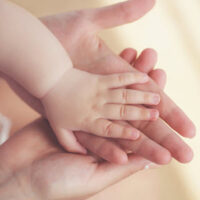Signs Of A Birth Injury

The last thing a mother expects is for her newborn to experience harm because of a medical professional. Unfortunately, the truth is that it is not uncommon for children to suffer birth injuries because of medical professionals. It is estimated that 29 out of every 1,000 babies in the United States of America are born with birth injuries, and many of these injuries are preventable. When a preventable birth injury occurs, it amounts to medical malpractice. Fortunately, some birth injuries can be managed if detected early. Therefore, it is crucial for parents to know how to detect birth injuries.
Also, after a child suffers a birth injury due to medical malpractice, a parent can take legal action and receive justice and compensation. By filing a medical malpractice claim, a parent can recover compensation for, among other damages, medical expenses, future lost earnings, loss of enjoyment of life, mental and emotional suffering, and pain and suffering.
Common Signs and Symptoms of Birth Injuries
Some birth injury symptoms can be seen soon after a child’s birth, whereas others take time to develop. Because of this, it is crucial for parents to monitor their children’s development from birth through toddlerhood and note any abnormalities or delays.
Conditions and Symptoms That Develop Immediately After Child Birth
The following are some signs that present themselves immediately after a child is born that might indicate a birth injury;
- Abrasions, swelling, or bruises on the baby’s head, face, or shoulder
- The baby’s head lags when picked up
- Seizures appearing within two days
- Breathing difficulties
- Excessive drooling
- Arched back while crying
- Low heart rate
- Constant vomiting
- Sensitivity to light
- Weak or absent reflexes
- Skull fractures
- Hand curled into a claw-like shape
Signs that Develop Later
The following are some of the late signs parents need to look out for that could indicate birth injuries;
One-month
- Baby feeds and suckles slowly
- Baby does not blink when light shines in their eyes
- Stiffness in the limbs
- Limbs barely move
Three months
- Baby does not respond to loud noises
- Baby cannot support their head
- Baby cannot grasp or hold objects
- Baby cannot push their legs down when feet are on a firm surface
Seven months
- Baby can’t roll over by themselves
- Baby’s muscles are extremely tight
- Baby is overly stiff
Twelve months
- Baby can’t crawl
- Baby can’t speak a single simple word
- Baby can’t stand even when supported
Between 12 and 24 Months
- No speech or delays in speech
- Difficulties with crawling or walking
- Poor coordination
- Hearing problems
- Lack of body movements
- Difficulties with drinking, eating, using cups, or grasping utensils
- Not putting objects in the mouth
- Not able to pass small objects from one hand to the other
- Vision problems
After 24 Months
- Vision and hearing problems
- Weak or stiff muscles
- Cannot utter words
- Tremors
- Difficulties standing
- The onset of developmental disabilities, such as epilepsy or autism
After noticing any sign that could indicate a birth injury, it is crucial to consult a medical professional for immediate intervention.
Legal Help Is Available
If your child suffered a birth injury due to medical malpractice, and you need legal help, our Atlanta medical malpractice attorney at Carroll Law Firm is here for you. We can help you get the justice and compensation you deserve.
Source:
publications.aap.org/pediatrics/article/149/1%20Meeting%20Abstracts%20February%202022/811/186210/Birth-Trauma?autologincheck=redirected?nfToken=00000000-0000-0000-0000-000000000000
